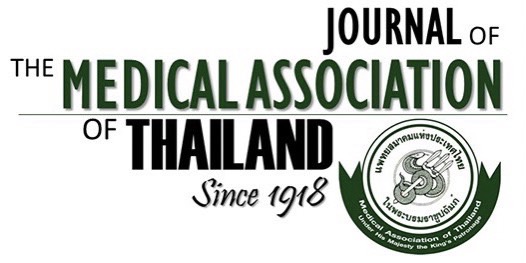Clinical Outcome of Pallidal Deep Brain Stimulation for Various Types of Dystonia
Sarun Nunta-aree MD, PhD*, Pree Nimmannitya MD*,**, Bunpot Sitthinamsuwan MD, MSc*, Apichart Pisarnpong MD***, Kanokwan Boonyapisit MD***
Affiliation : * Division of Neurosurgery, Department of Surgery, Faculty of Medicine Siriraj Hospital, Mahidol University, Bangkok, Thailand ** Division of Neurosurgery, Department of Surgery, Thammasat University, Pathumthani, Thailand *** Division of Neurology, Department of Medicine, Faculty of Medicine Siriraj Hospital, Mahidol University, Bangkok, Thailand
Background : Deep brain stimulation of the globus pallidus interna (GPi-DBS) has been approved as a surgical treatment for
severe dystonia.
Objective : To study and compare the efficacy of GPi-DBS for various types of dystonia, and to identify predictive factors of
surgical outcome.
Material and Method: Fifteen dystonic patients who received bilateral GPi-DBS were included in the study. Clinical outcomes
were evaluated by Burke-Fahn-Marsden Dystonia Rating Scale (BFMDRS).
Results : Seven cases with primary dystonia had consistent dramatic improvement in pain, motor and bulbar functions though
all were negative for DYT1 gene mutation. The mean improvement of BFMDRS was 71.02%. Eight with secondary dystonia
had inconsistent improvement of BFMDRS with a mean improvement of 30.49%. Post-stroke dystonia and tardive dystonia
had significant sustained improvement of 100% and 97%, respectively. Secondary dystonia from traumatic brain injury had
modest sustained improvement of 47%. Dystonia secondary to cerebral palsy, Huntington’s disease and CNS infection,
showed no improvement. Patients with segmental dystonia improved greater than generalized dystonia regardless of primary
or secondary type (82.45% and 20.49%, respectively). Patients whose main symptom was mobile dystonia had more
improvement than mixed dystonia and fixed dystonia.
Conclusion : Primary dystonia was a strong, good predictive factor. Secondary dystonia from stroke and tardive disorder,
segmental and mobile dystonia seemed to be good predictive factors. Dystonia, secondary to cerebral palsy, Huntington’s
disease and CNS infection was a poor predictive factor.
Keywords : Dystonia, Globus pallidus internus, Deep brain stimulation



